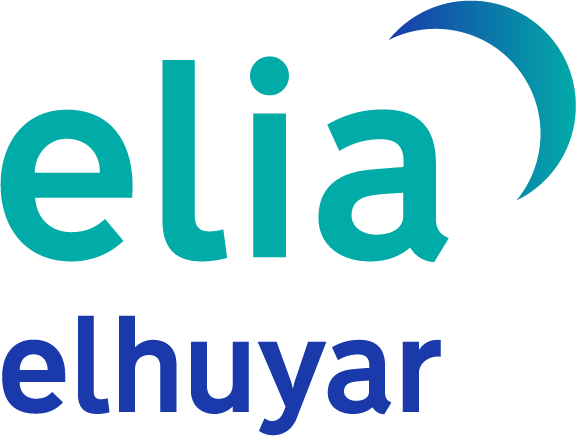This year a step forward than last year and a step backward than next year. This could be the core of the synthesis to describe in a very brief way some facts and concepts that are present in the Basque media. First of all, this is what traffic data shows on the websites, which approach the era of the pandemic in which they reached the top. Secondly, the commitment to update and transform the new media and formats, driven by the global process of digitalization. And thirdly, the media’s attention to digital analytics and the work they are doing, with the replacement of the measurement systems that occurred in 2023, looking at it with the help of the Observatory. Because, to the extent that we pay more attention to digitization, it gives us a look in the form of data and, therefore, we must sharpen the devices, tools and capabilities to read and interpret it, in order to understand the message well. Not to ignore and discard the tools we have, but to capture new ones. This publication also aims to contribute in this direction, but not limited to it.
In its fourteen articles, the Yearbook of the Basque Media 2023-2024, gathers the studies and reflections necessary to continue advancing, in addition to highlighting, deepening and making a work of dissemination and deposit in the field of the media in Basque.
In the initial block we have two chronicles, one international and the other Basque, that do a review last year and summarize what this year brings. In the so-called ‘Global Look at the Digital Media Ecosystem’, Hibai Castro Egia, from the Basque Media Observatory who writes these lines, tells us the global echoes. Igor Astibia Teiletxea, director of HEKIMEN Elkartea, explains in his article entitled “Media in Basque on the road to transformation” the steps taken by the association. The speed of digitalization deployment and the adaptation effort is one of the main themes highlighted in both.
To the Opinion Open Signature section, we brought Lander Arretxea Bereziartua, writer, journalist and communication expert. In his article “Self-help exercise to look optimistically at dystopia”, he focuses on what he thinks, in order to offer him some grips to face less anxiety. It gives a few practical brushes and feels the concern for the interior, fed by the willingness to follow in action.
The block of articles we receive directly from the sector is opened by the article “From resilience to the digital leap, friendly community”, which informs us of the fruitful evolution of the Euskalerria station, which has just turned 35 years old. In it, Miren Mindegia and Juan Kruz Leza describe the steep and fiery trajectory of radio in a story that is certainly motivating. With a new anniversary, in this case the twentieth, Berria has made a great, integral transformation: from the change of the system of edition and integral organization of paper, to giving priority to digital edition and updating all the workflow and management, also renewing designs in all supports. Amagoia Mujika Tolaretxipi writes an article entitled “Quality journalism, an unchanging challenge” that explains the details of the transformation. The following article, entitled ‘EITB: audiovisual is digital’, written by ETB Director Unai Iparragirre Torres. It gives the glimpses of EITB’s strategic thinking in relation to the digitisation process and realizes the new supports they have put in place to address these objectives; Bikain, the Makusi and Guau platforms, or the Gaztea krosmedia brand still to be redesigned Eitb.eus. We close this paragraph with the article entitled ‘A new generation in the media of the Northern Basque Country’, on the university diploma of journalism, which tells us of a successful initiative in the media environment of Iparralde. It is signed by Ibai Aguirrebarrena Mendiboure of the EEP and is round by three media, presenting on radio, television and written media the first fruits of this initiative.
The first of the longest series of articles in the field of research focuses on a topic that generates great curiosity: ‘Social value of the media in Basque: Eneko Bidegain, Aitor Zuberogoitia and Txema Egaña from Mondragon Unibertsitatea have brought an article entitled “Case studies of light and grain”. Reading your text shows that reducing the contribution of an Basque media to economic figures is a disaster and, on the contrary, a great social and cultural wealth.
The next article by the same Department, which is the ninth in the line, has been signed by Garazi Sánchez Murciano, Edorta Arana Arrieta, Bea Narbaiza Amillategi and Libe Mimenza Castillo, researcher at the NOR Research Group of the UPV/EHU, and the relationship of young people with the information has been analyzed. The work entitled ‘Youth and Information’, together with the analysis of habits and trends in the consumption of news by young people, has gathered the influence of networks on ways to create news, as models adapted to the interests and needs of the new generations are being deployed.
In article 10, Ainara Larrondo Ureta, Simón Peña Fernádez and Urko Peña Alonso, members of the Gureiker Research Group at the University of the Basque Country, have analyzed the presence of the theme of artificial intelligence in the digital communicative sphere and especially in the X network. As the article entitled “Artificial intelligence in digital dialogue in the Basque Country: a missed opportunity for dissemination?’, given the importance of the issue, they have come to the conclusion that what they have discovered is a small amount.
The following article presents a new structural adequacy index of radio and television in minority languages, the IGAE index. Under the title “Structural Suitability Index for the Development of the Hearing in Radio and Television of Minority Languages”, Iñaki Zabaleta Urkiola and Tania Arriaga Azkarate, from the HEKA Research Group of the UPV/EHU, have brought to this issue a research project in depth in which they explain the new concept that they have obtained.
In article 12, the researcher of the NOR Research Group of the UPV/EHU Ane Martínez Juez analyzed media consumption in Basque by sociolinguistic areas. In his article “Content consumption in Basque and sociolinguistic spaces: relationship between the two variables in the focus”, in addition to delving into the relationship between the two variables mentioned, addresses a second objective: to analyze the evolution of media consumption in Basque society in the last 25 years (1997-2022) from the data of the CIES.
Arantza Gutierrez-Paz, from the Research Group Visibility of Women in the Media, is the researcher who signs the thirteenth article. Also in the article “The visibility of women farmers in the EITB Sustraia programme”, as stated in the articles published annually since 2016, it has been concluded that the presence of women in the Basque media has increased, but at the same time reaffirms in the latter that there is a long way to go in this area.
Finally, we will close this year’s publication with the article that analyzes traffic on the websites of the Basque media. We highlight two main data from the work of Libe Mimenza Castillo, researcher of the NOR Research Group, Ane Martinez Judge, Naroa Burreso Pardo and developer of CodeSyntax, Josu AzpilhghLabaka, entitled “Web hearings of the Hekimen association in 2023, a leap in analytics”. On the one hand, the number of sessions has increased by 9% compared to last year, attracting more than 40.3 million visits; and on the other, that in 2023 there has been a leap in digital analytics, to which the media in Euskera have focused, with more attention than ever.
The latter brings us back to what was said earlier. Because as we pay more attention to digitalization, it gives us back its look in the form of data. We therefore develop the ability to interpret well.


